The blue whale, the largest mammal on Earth, often attracts attention. Its size and successful hunting methods are truly remarkable. But have you ever wondered why blue whales prefer small fish and shrimp over larger marine creatures?
The blue whale is the largest animal in the world and a giant of the ocean. As a massive predator, blue whales require a tremendous amount of energy to maintain their colossal size and sustain their life activities. However, there is still much to discover about the dietary preferences of blue whales.
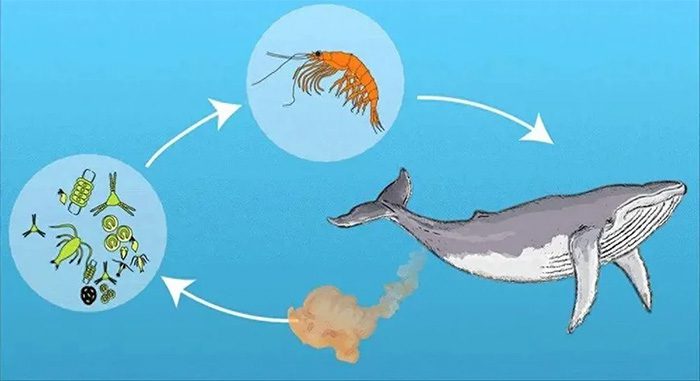
Small fish and shrimp often form huge schools, creating vast ecological chains in the ocean. (Photo: Zhihu).
Blue whales tend to prefer small fish and shrimp rather than larger species. This preference is closely linked to the relationship between energy intake and food abundance. Small fish and shrimp are relatively small but have a high energy content. This means that blue whales can gain more supplemental energy by hunting small fish and shrimp.
The school structure of small fish and shrimp is also one of the important reasons for blue whales’ preference. Small fish and shrimp often gather in very large schools, creating vast ecological chains in the ocean. By preying on these small fish and shrimp, blue whales not only ensure sufficient energy but also control the population and structure of these fish schools. This control helps maintain the balance of the marine ecosystem and promotes the reproduction and development of other species.
Although blue whales prefer to eat small fish, in some cases, they will hunt larger fish. This usually occurs when blue whales are foraging in a specific season or area. When the numbers of small fish and shrimp decrease or become unavailable, blue whales must switch to hunting larger fish. In such cases, the energy gained and the abundance of food for blue whales may decrease, but they can still meet their energy needs by hunting larger fish.
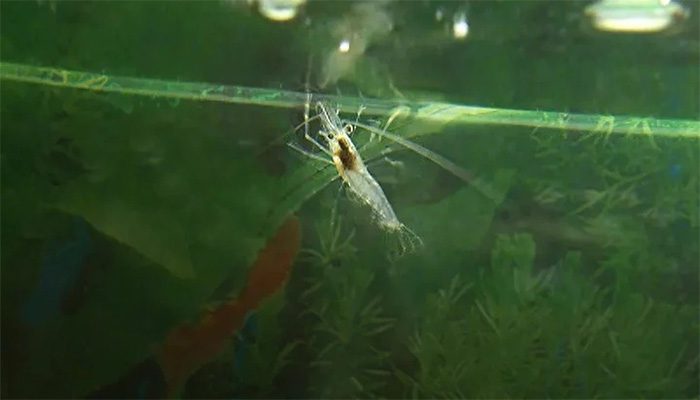
Small fish and shrimp provide abundant energy and rich nutrients, which can meet the energy and nutritional needs of blue whales. The community structure of small fish and shrimp also helps maintain the balance of the marine ecosystem. (Photo: Zhihu).
Hunting Strategies and Environmental Adaptation
As the largest animals on Earth, blue whales (Balaenoptera musculus) have astonishing size and hunting methods. Their hunting strategies and optimized environmental adaptations allow them to efficiently acquire food.
Due to their massive size, blue whales require a large amount of food to maintain their life activities. To save energy, blue whales feed by filtering their prey. They swim to areas rich in plankton, swimming slowly with their mouths wide open, then engulfing a large volume of water along with their prey.
Afterwards, blue whales close their mouths and filter the water through special baleen plates in their mouths, while small fish and shrimp are retained for consumption and seawater is expelled. This feeding method allows blue whales to consume a large amount of food in a short time to satisfy their needs.
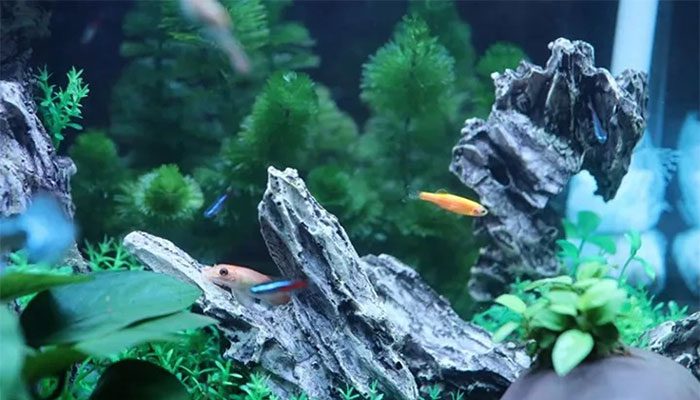
Blue whales prefer to eat small fish and shrimp not only to meet their own food needs but, more importantly, for their critical role in maintaining the balance of the ecosystem. They help control populations of small fish and shrimp, maintain species diversity, and continue to provide essential nutrients for the marine ecosystem. (Photo: Zhihu).
Plankton is widely distributed in the ocean but its density is not uniform. To better hunt for food, blue whales search for clusters of plankton by observing and sensing sounds in the water. Blue whales have a well-developed auditory system that allows them to hear sounds made by distant plankton and thus locate food. They also utilize factors such as seawater temperature, salinity, and currents to determine where the most food is available.
Blue whales are highly social animals, often living in groups. This collective behavior enhances their ability to hunt small fish and shrimp. When blue whales find a food cluster, they attract the attention of other blue whales by producing specific vocalizations and coordinating actions to hunt. This cooperative behavior not only improves the efficiency of food gathering but also enhances their defensive capabilities.
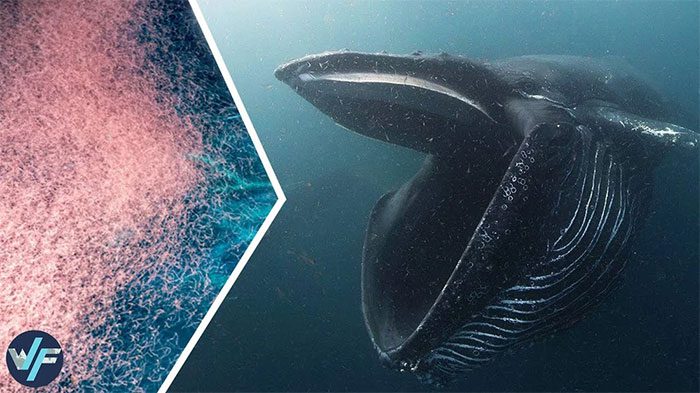
The hunting strategies of blue whales and their environmental adaptation optimization allow them to pursue sufficient food in the ocean. (Photo: WF).
Small fish and shrimp are bottom-dwelling species in the marine food chain and are an important source of nutrition in the marine ecosystem. Blue whales tend to eat these small organisms because they are nutritious and abundant. This preferred diet closely links the survival and reproduction of blue whales to small fish and shrimp. Without a sufficient supply of small fish and shrimp, the food chain of blue whales would be disrupted, leading to a decline in the blue whale population.
Small fish and shrimp tend to reproduce rapidly, and if their numbers become too high, they can threaten the survival of other organisms. The hunting behavior of blue whales can limit the growth of small fish and shrimp populations, keeping their numbers at reasonable levels. This control helps maintain the balance of the entire food chain and prevents environmental eutrophication.
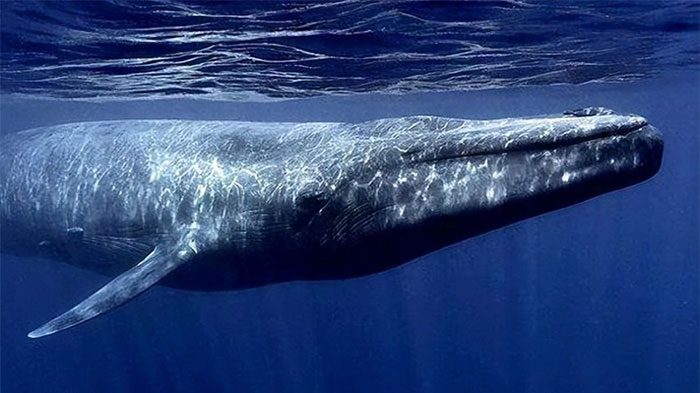
The blue whale (Balaenoptera musculus) is the largest animal in the world and plays an important role in the marine ecosystem. As one of the foods for blue whales, small fish and shrimp are crucial in maintaining the ecosystem balance. (Photo: Zhihu).
As human activities increase, the food sources for blue whales in many marine areas are threatened. Factors such as environmental pollution, overfishing, and climate change pose threats to the habitats of small fish and shrimp. These issues can lead to a decrease in the food supply that blue whales depend on or even extinction. To protect blue whales and the balance of the entire ecosystem, we should take proactive measures such as limiting fishing, reducing pollution, and improving marine environments.
We should be aware of the importance of protecting blue whales and their food sources, while also striving to take action to safeguard the health and sustainable development of the marine ecosystem.


















































